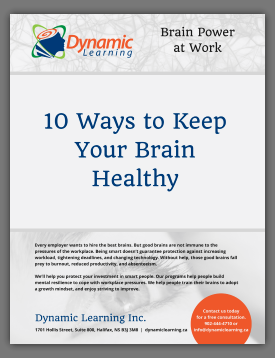If you are like most people, you read more slowly than you can think. Since a piece of writing is actually slowing down your thought process, you will tend to be easily distracted, to get bored, and worst of all, to get drowsy and even fall asleep when you are reading. Given that most of us have learned to look at only one word at a time—even though we can easily see several words at a glance—we frequently look back along the line or back up the page when we read. In fact, the average adult “regresses” 15 to 20 time for every 100 words they read. Think about how much visual information the brain has to screen out when we are reading that way.
The term “Speed Reading” was first used by Evelyn Wood, a schoolteacher who decided to take a Masters degree in Education, specializing in reading. When she started in the late 1950’s at the University of Utah in Salt Lake City, she discovered that the professor she was studying with read at over 1,000 words per minute with good comprehension. Since she knew that most people read between 200 and 250 words per minute, Evelyn found this intriguing and decided to find others with this unusual ability and find out how they were doing it.
She tracked down about 40 people who met her criteria of “Natural Speed Reader”: they could read at over 1,000 words per minute with good comprehension. She watched them read, measured their speed and comprehension, and asked them to tell her what they were doing and how they were doing it. She found that all of them had developed this ability by themselves, but they all had three techniques in common. Using these techniques, she taught herself to speed read. She then designed a course to teach others to speed read as well. Later she offered her very successful techniques to high school teachers in Salt Lake City. But the school board declined her offer, and she realized she was going to have difficulty getting the educational world to accept the notion of speed reading as a new teaching technique.
So she moved to Washington, DC, and began working as an independent educational consultant. Because the Russians had recently beaten the US into space with the Sputnik, there was an intense interest in education in the US at that time. Not surprisingly, her business flourished. It became even more successful after she was invited to The White House to teach President Kennedy and his staff to speed read. Her methods gained national renown.
Evelyn Wood franchised her company throughout North America and gathered many devoted followers—because speed reading worked. I learned to speed read through her course and went on to teach it for her company while I was taking my undergraduate degrees at Dalhousie University. After graduating, I taught reading in elementary school for five years and then went on to take my Masters degree in Education, specializing in reading. During that time, I developed my own speed reading course, based on the work of Evelyn Wood, and I have been teaching it for over 20 years.
Most people have only two reading speeds: slow and slower. Once you have taken a speed reading course, you will be able to read at various speeds: very, very fast; very fast; fast; medium; and slow. You’ll be able to adjust your speed to suit your purpose in reading and the difficulty of the material. At work, people are very knowledgeable about the content of their professional material, so they can read it a lot faster than they think they can. By the end of the day, the average person taking my speed reading seminar can at least double—and often triple—his or her speed. And they will still maintain good comprehension!
Guided by the practice exercises in the take-home manual, you can increase those speeds for reading professional material within a week. During the seminar, participants learn to read a 150-page book and make effective notes in less than 35 minutes. They learn how to establish their purpose in reading, set up their note-taking system, and quickly find and record the key information that will meet their purpose. Reading becomes an engaging challenge, rather than a chore.
Do you love to read and are afraid that speed reading will take the pleasure out of reading? No need to worry. Like most people, you will probably use speed reading for your professional reading, which gives you more time for others things you like to do—including leisure reading, which you can do as slowly as you like.


